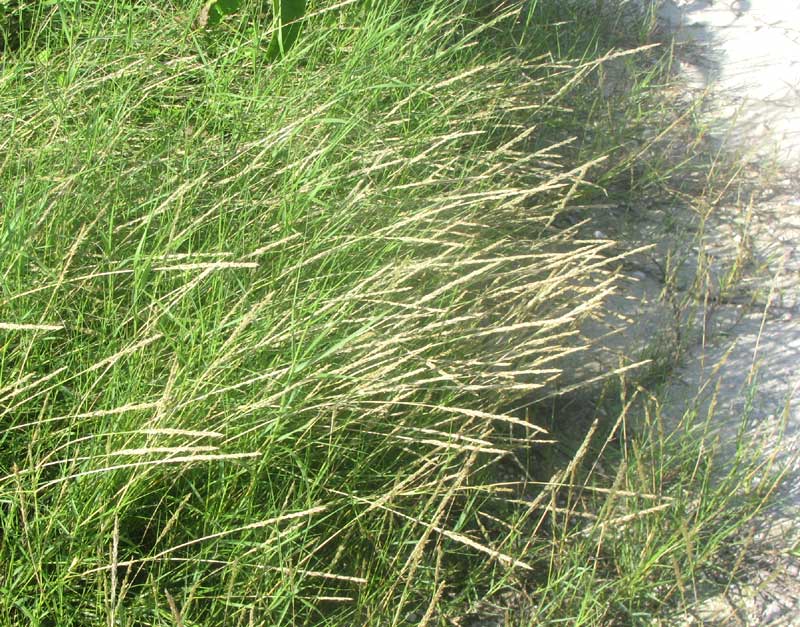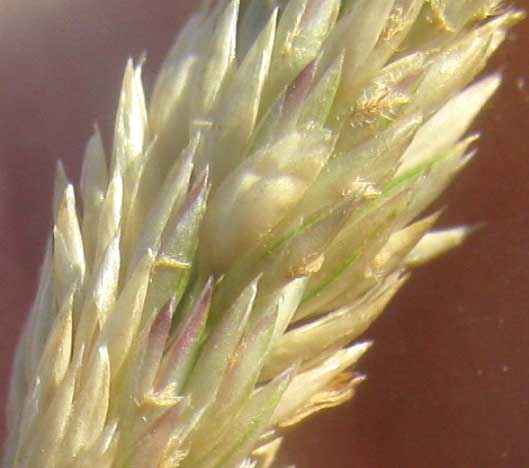Excerpts from Jim Conrad's
Naturalist Newsletter

from the July 24, 2011 Newsletter issued from Mayan Beach Garden Inn 20 kms north of Mahahual; Caribbean coastal beach and mangroves, ~N18.89°, ~W87.64°, Quintana Roo state, MÉXICO
SAND COUCH GRASS
Where the narrow, white-sand road meets the beach, usually there's a certain ubiquitous, clump-forming grass producing runners that inch onto the road until they're pruned by car tires. A knee-high population issuing slender, pale flowering heads is shown above.
A close-up showing a runner rooting at its nodes and issuing short stems with short, stiff, congested, sharp-pointed leaves and dense, cylindrical, flowering heads (spike-like panicles) can be seen below:

This is SPOROBOLUS VIRGINICUS, native to the tropical and warm Americas from the US southern states south to Chile and Brazil. It's been naturalized in so many other countries in Africa, Asia and Australasia that it's known by many English names, including Marine Couch, Sand Couch, Coastal Rat-tail Grass, Salt Couch Grass, Saltwater Couch and Seashore Dropseed.
Mostly the grass grows on sandy, salty, mostly coastal soils. With those node-rooting runners shooting across the sand and the concentration of leaves close to the ground, it's clear why this grass is a very important member of the coastal strand community: It gathers windblown sand, slowing beach erosion. Sand Couch is an important species in worldwide beach restoration projects, where plants have to be highly salt tolerant, and able to impede wind-blown sand.
There's a similar species in some parts of the world occurring in the same habitat -- Distichlis spicata. One way to distinguish the two species is by the flowers. Distichlis spicata's florets bear conspicuous green lines, or "ribs," along their sides, while Sand Couch florets lack those ribs, as shown below:

It's interesting that several of the English names for this plant include the word "couch." A little digging into the word's etymology reveals that using "couch" for grasses goes way back, the first mention of "couch-grass" being made back in the 1570s. The word was corrupted from the Old English "cwice," which meant "living" or "alive," and arose, presumably, from Proto-Germanic "kwikwaz." Maybe in earlier times "Couch-Grass" seemed particularly "alive" because it could thrive in salty, severe beach habitats.